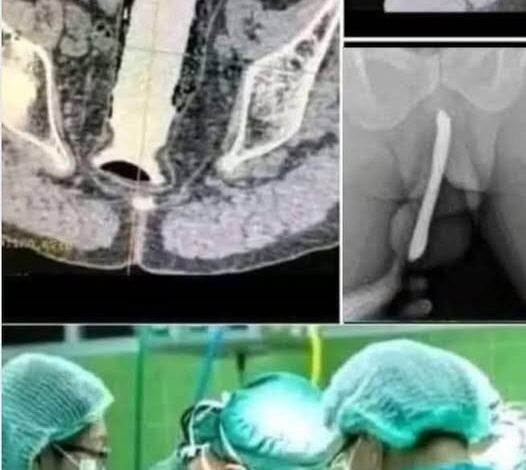Teen Had To Be Hospitalized After Risky Experiment, A Wake-Up Call About Health!

In recent days, a disturbing story has captured widespread attention across social media and health forums, highlighting the risks adolescents face when engaging in unsafe behaviors. Reports indicate that a teenage girl was hospitalized after misusing a common household item, resulting in severe internal injuries. The incident required emergency care and has reignited discussions about adolescent health, awareness, and prevention.
The Incident
According to local reports, the teenager attempted to insert a pen into her body, causing serious internal damage. The situation quickly escalated into a medical emergency, and she was rushed to the hospital, where doctors worked to stabilize her condition. While privacy laws prevent disclosure of her identity or specific medical details, officials confirmed that her injuries were severe. Fortunately, thanks to rapid intervention, she is now reportedly improving.
A Wake-Up Call for Parents and Communities
Health experts stress that this incident serves as a sobering reminder of the hidden dangers adolescents may encounter. Curiosity, peer pressure, and misinformation can drive young people to experiment with risky behaviors. Easy access to unverified online sources can exacerbate the problem, particularly when teens lack trusted guidance about their bodies and relationships.
Dr. Angela Rivera, a pediatric emergency physician, explains, “Young people often feel too embarrassed to ask questions openly, so they turn to unsafe experimentation. This incident underscores the importance of honest conversations about health, safety, and the human body.”
Medical Risks of Foreign Objects
Medical professionals warn that inserting foreign objects can result in serious complications. Sharp or rigid items like pens may puncture tissue, cause bleeding, or introduce bacteria leading to infection. In extreme cases, such injuries can result in sepsis or long-term damage.
Gynecologist Dr. Meera Patel emphasizes, “The body is not designed to accommodate non-medical objects. Even everyday household items can cause trauma, infections, and permanent scarring—risks far greater than most teenagers realize.”
The Role of Misinformation
Experts highlight the influence of misinformation on adolescent decision-making. With vast amounts of online content, teens may encounter unsafe guidance and feel pressured to replicate behaviors without understanding the consequences.
Psychologist Dr. James Walker notes, “Adolescents face an overload of information, much of it unreliable. Unsafe portrayals of health or intimacy online can mislead teens. Education and open communication are essential to counter these risks.”
Psychological Factors
The teenage years involve exploration and self-discovery. Peer influence, fear of judgment, and lack of trusted guidance can push adolescents toward dangerous choices. Dr. Walker adds, “Rather than assigning blame, it’s critical to understand the pressures or gaps in knowledge that led to the decision. Many young people experiment because they lack safe spaces to ask questions.”
Calls for Better Education
Healthcare professionals and advocacy groups are calling for stronger health education programs. Schools, parents, and communities must provide accurate information about anatomy, personal safety, and the dangers of unsafe experimentation.
“Education is prevention,” Dr. Rivera states. “When young people are empowered with knowledge, they are far less likely to put themselves in harm’s way. Open, factual conversations at home and in schools make a significant difference.”
The Role of Parents
Parents are key in prevention. Experts encourage creating environments where children feel comfortable asking difficult questions without fear of judgment. Dr. Patel explains, “Parents don’t need all the answers. What matters is listening without shaming and guiding teens toward safe, accurate information.”
Community Reactions
The story has sparked strong reactions online, with many expressing concern and sympathy. Advocacy for improved health education, resources for adolescents, and mental health support has intensified as community leaders emphasize collective responsibility.
Recovery and Reflection
The teenager remains under medical supervision but is expected to recover. Experts stress that physical healing should be accompanied by psychological support to address the trauma. Counseling can help both the teen and her family process the event safely.
A Broader Lesson
This incident is a reminder of the gaps in education, communication, and guidance that leave adolescents vulnerable. Risky experimentation is common, and prevention requires collaboration between families, educators, healthcare providers, and policymakers.
Dr. Rivera concludes, “Every young person deserves the chance to explore safely. Adults must provide the tools, guidance, and support needed—before curiosity turns into crisis.”